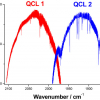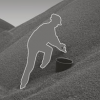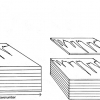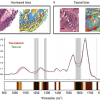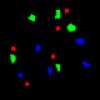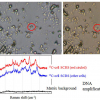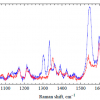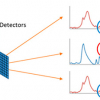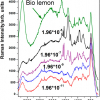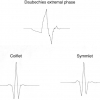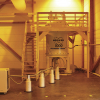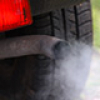Articles and Columns
Mathieu Duval raises the question “Dating fossil teeth by electron paramagnetic resonance: how is that possible?”. Whilst we are all familiar with 14C dating, the use of EPR is less well known. In fact, there are less than 10 laboratories in the world able to carry out EPR dating of fossil teeth!
“From lake ecology to biofuels—applications of Fourier transform infrared spectroscopy to algal research” is the topic of Andrew Dean, Jon Pittman and David Sigee. Algae are essential for our continued live on Earth, and FT-IR spectroscopy can increase our understanding of their physiology and biotech potential.
This is a new column on Sampling, edited by Kim Esbensen and Claas Wagner. I really only became aware of the Theory of Sampling (TOS) following conversations with Kim at the NIR-2013 conference in La Grande Motte, near Montpellier, France. I won’t steal Kim and Claas’ thunder by going into detail, but I see this new column as a perfect complement to our others. Ian Michael, editor.
Tony (A.M.C.) continues down the last furlong of his series of Tony Davies Column articles. This issue, he considers principal component analysis (PCA). Using research recently published in the Journal of Near Infrared Spectroscopy, he explains that PCA is a very useful tool but it will not solve all our problems. Two old articles on PCA, including Tony’s concept of the “Data Cake” have been added to the website, are referenced in Tony’s article and can be freely downloaded by readers.
This article describes an application of spectral imaging for the differentiation of tumour and normal cells. The authors also introduce the concept of a spectral barcode, which has had success with some tissues and has potential in others.
Sotiris Stasinos and Ioannis Zabetakis have used ICP-MS to investigate the cross-contamination of food crops by heavy metals in ground or irrigation water. They show that this can occur easily in certain crops, which has serious health consequences for those consuming the food crop. As a consequence of their work, the European Food Safety Authority (EFSA) has been informed about the accumulation of Cr and Ni in food tubers and is taking action.
Near infrared hyperspectral imaging for foreign body detection and identification in food processing
With continuing food scares around the world, food producers need every tool they can get to prevent contamination of their products at every stage of production. Hyperspectral reflectance imaging in the NIR combined with chemometrics shows much promise for the detection and identification of foreign bodies among food grains.
John Hammond reports on important developments at the ISO Committee on Reference Materials (ISO/REMCO) annual meeting.
Robert Lancashire reports from the Chemical Information Division (CINF) of the American Chemical Society meeting at their recent 246th ACS National Meeting and Exposition.
The single cell Raman spectrum (SCRS) enables cell probing and sorting to study phenotypes and ecophysiology of single cells and explore individual cells in situ in a label-free and non-destructive manner.
In resonance Raman scattering (RRS), the amount of structural and chemical information deduced can be increased by analysing the polarisation of the inelastically scattered light, including the degree of molecular aggregation in bio-molecules in their natural environment.
There are a number of approaches, and by combining FT-IR imaging methodology with microfluidics devices, the opportunity to study live cells by FT-IR imaging in controlled environments is now possible.
This article explains the challenges in pesticide residue analysis of samples associated with suspected poisoning incident investigations, including the wide range of specimens and pesticides that need to be considered.
Thiabendazole (TBZ) is a chemical fungicide and parasiticide used to prevent mould, blight and other diseases resulting from long transportation and storage, largely used as an ingredient in waxes applied to the skins of citrus fruits. The authors describe their work using near infrared-surface-enhanced Raman spectroscopy and conventional Ag nanoparticles, which showed that TBZ was found both on organic fruit and at levels higher than regulations allow.
Now that Tony understands wavelets, he is in the perfect position to explain them to the rest of us! Whilst wavelet compression is an interesting and popular method, it is worth confirming that there is a real benefit in using them compared to FT compression, especially for near infrared spectra where there are few regions of flat baseline.
In this article we learn of a new definition for “bath salts”, and how modern mass spectrometry instrumentation can provide rapid and quantitation of these “designer” drugs.
Tony (A.N.) Davies is getting excited by GHz NMR. These new high fields offer tantalising new areas of research but at a cost that generally requires their purchase by Government-funded centres of excellence. He argues that continued funding of such projects is essential, especially in difficult economic times.
Peter Jenks and John Hammond describe how the important ISO 17025 standard has developed, and point out that a review for the third edition of the standard will start soon. All those with an interest in quality standads—an increasing number of us—should make sure their voice is heard at their local standards body.
Both the size and chemical composition of airborne particles have an effect on human health. Whilst the effects of size have been much studied, many of the toxic chemicals in particles are at very low concentration and have been less studied. Monitoring their composition and concentration over time helps to determine their source. Synchrotron radiation-induced XRF spectrometry proves to be a good tool for this purpose.


